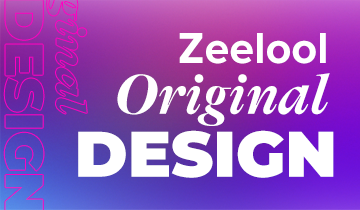What are the different types of lens coating?
Coatings for eyeglass lenses are special layers applied to the surface of the lens to improve performance and visual experience. These coatings can serve different functions depending on their type and purpose. Here are some common types of eyeglass lens coatings and their functions.
Lens coating types:
1. Anti-scratch coating
Anti-scratch coating is a durable, scratch-resistant layer applied to the surface of the lens. It serves to protect the lenses from scratches, thereby significantly extending their lifespan. This practical and cost-effective coating is essential for maintaining the integrity and longevity of the lenses.
2. Anti-reflective coating
Anti-reflective coating is a robust, thin film layer applied to the lens surface to minimize reflections. By allowing more light to pass through, it enhances visual clarity and contrast, resulting in a more high-definition appearance. Additionally, it reduces eye fatigue, making it particularly beneficial for nighttime driving and prolonged use of electronic devices.
3. UV-protective coatings
UV protection coatings prevent harmful ultraviolet (UV) rays from reaching the eyes, shielding them from sunlight and reducing the risk of diseases such as cataracts. By safeguarding against UV light, these coatings contribute to overall eye health.
4. Anti-blue light lens coating
Anti-blue light lenses feature a special coating designed to filter specific wavelengths of blue light, reducing its potential harm to the eyes. These lenses are ideal for use when viewing computers, cell phones, and other electronic screens, mitigating the potential damage caused by prolonged screen exposure and promoting eye protection.
5. Photochromic Coating
Photochromic coating contains a photochromic factor that automatically adjusts the lens transparency based on the lighting environment. When exposed to UV rays, the lenses darken to protect against UV damage. These lenses remain transparent indoors, functioning as prescription glasses. They change color depth under varying light conditions, transitioning from transparent indoors to darkened outdoors, making them suitable for use as both sunglasses and office glasses. This versatility offers convenience and practicality.
6. Anti-fouling coating
Anti-fouling coating for glasses involves the application of a dense film layer using vacuum coating or solvent-gel methods. This smooth surface makes it difficult for stains and dust to adhere, enhancing the anti-fouling ability of the glasses. The coating also enables waterproof, oil-resistant, and UV protection functionalities, enhancing the lens's durability and wear-resistant performance. This results in a waterproof and dust-proof effect, while also facilitating easy cleaning of the lenses.
7. Waterproof Coating
Waterproof coating is a specialized surface treatment applied to lenses, forming a hydrophobic protective film. This film facilitates easy cleaning by allowing water droplets to slide off the lens surface, minimizing the accumulation of water, grease, dust, and fingerprints. With a simple wipe using a damp cloth, these contaminants can be effortlessly removed, ensuring the lens remains clean and clear.
8. Anti-fog coating
Anti-fog coating is a specialized treatment applied to lenses, designed to absorb water molecules on the lens surface and prevent water vapor from condensing into fog. The coating forms a hydrophilic film on the lens surface, maintaining clarity and ensuring optimal vision for the wearer. Commonly used in outdoor sports glasses, swimming goggles, welding masks, and other lenses prone to fogging, this coating significantly improves the user's visual experience and represents a highly practical functional enhancement for lenses.
9. Antistatic Coating
Antistatic coating is a specialized treatment applied to the lens surface, designed to release static electricity in a timely manner, thereby preventing the accumulation of dust, hair, and other lightweight substances on the lens. This helps to maintain cleanliness and clarity. Additionally, the release of static electricity can reduce glare, protect the eyes, and extend the service life of the lens. Antistatic coating is a valuable enhancement that enhances the performance and longevity of lenses.
10. Tinted Coatings
Tinted coating is a process of applying tinting or coating to lenses to transform them into sunglasses. These coatings can adjust the color of lenses to accommodate various light conditions or purposes. For instance, sunglasses commonly feature tinted coatings to filter out intense sunlight.
In summary, these advanced lens coating technologies offer a range of functional options for eyewear, significantly improving their practicality and comfort. By carefully selecting and combining these coatings based on individual visual needs, users can enjoy a superior visual experience.


























